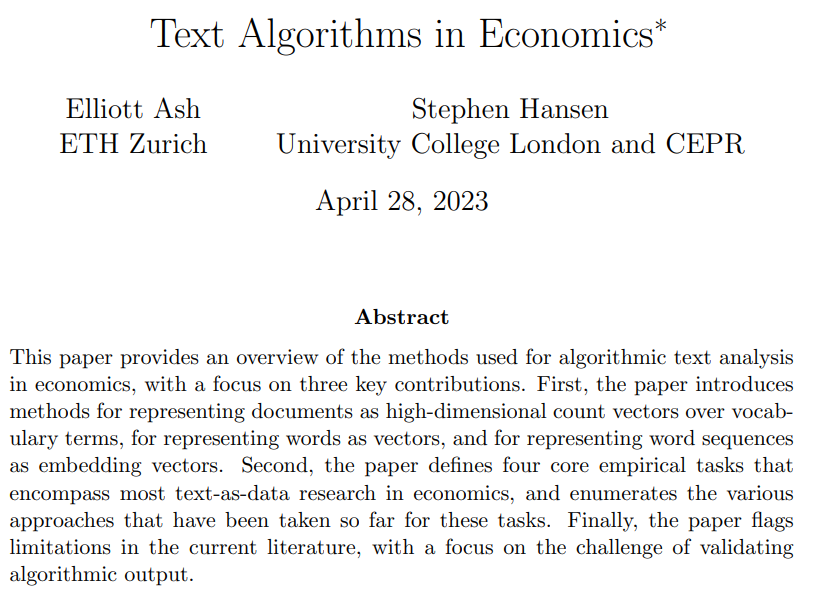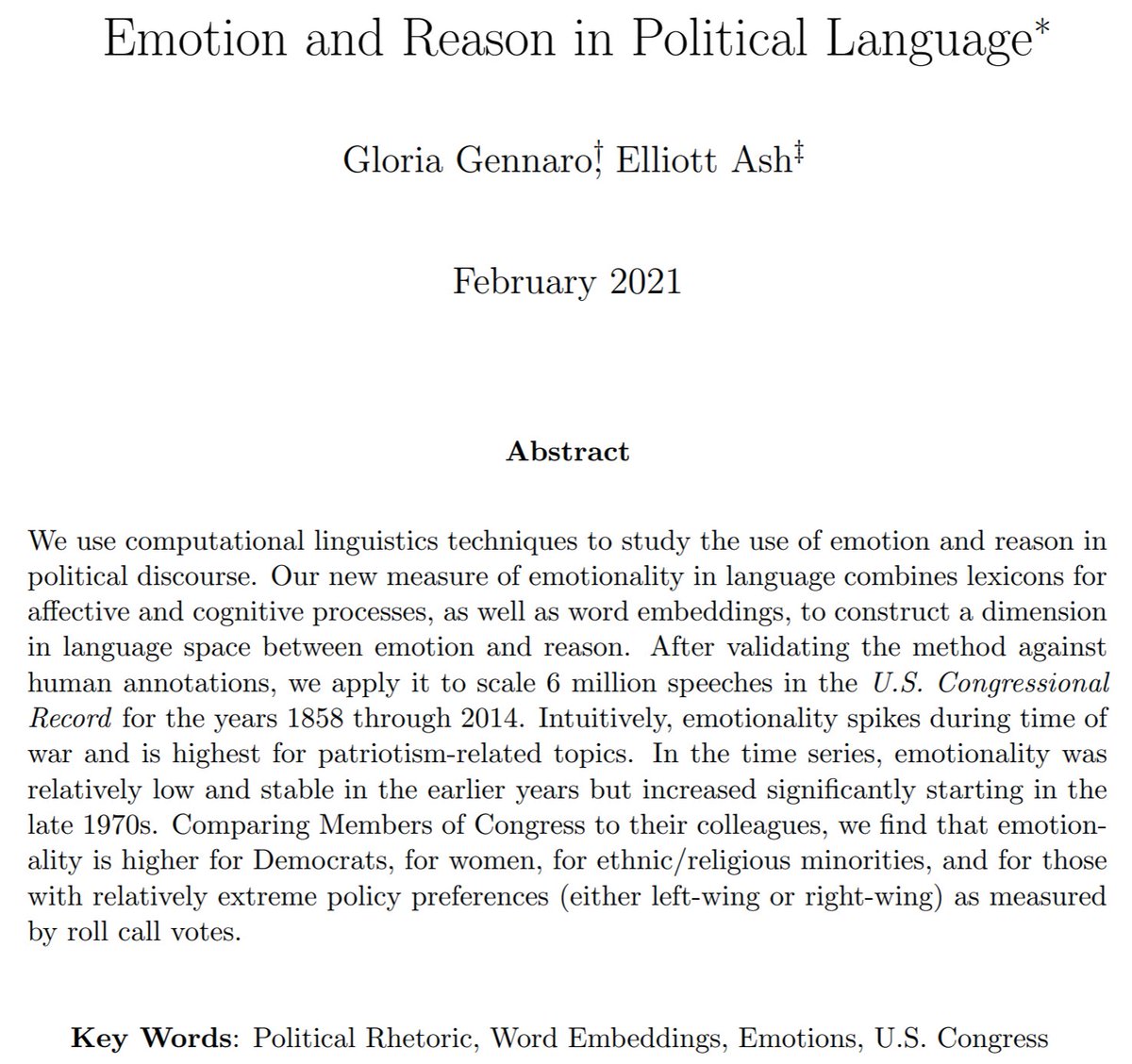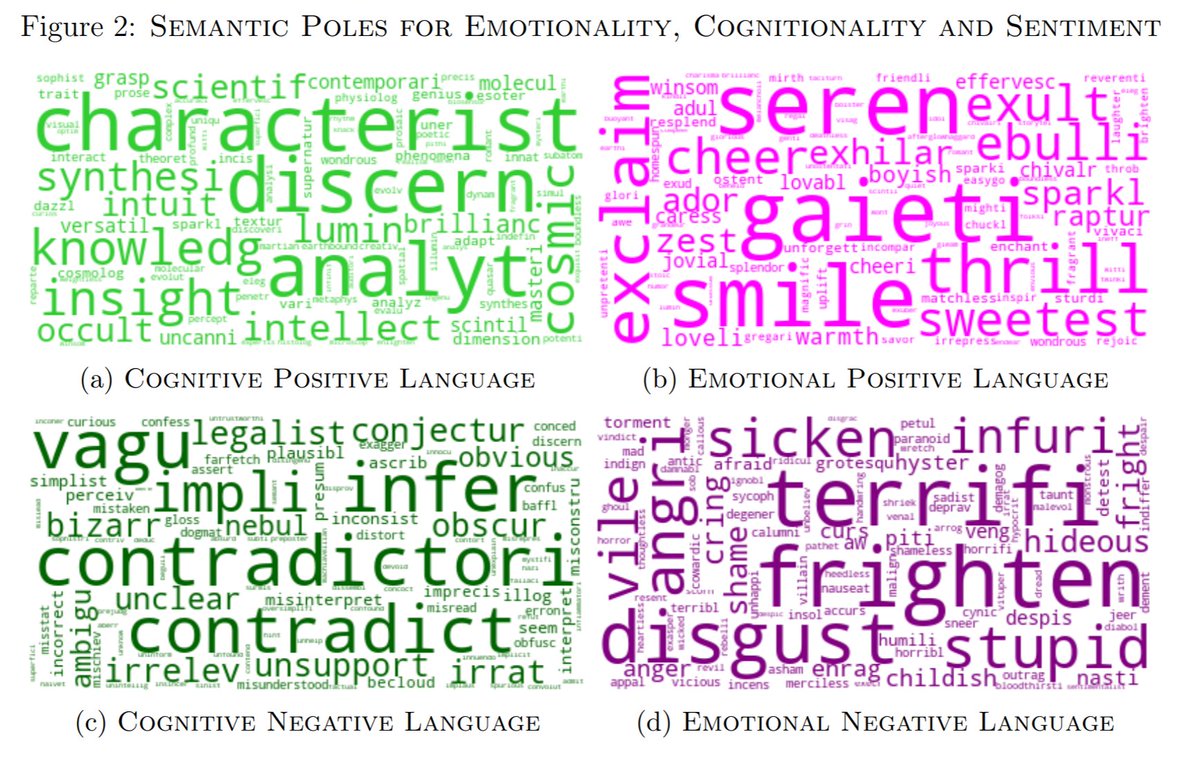
Prof @ETH Zurich: Law, Economics, and Data Science; @cepr_org affiliate (PE). Previously @warwickecon, @PrincetonSPIA, @columbia_econ, @ColumbiaLaw, @UTAustin.
How to get URL link on X (Twitter) App






https://twitter.com/cepr_org/status/1655181001574821890
 Methods covered in the "Text Algorithms" section:
Methods covered in the "Text Algorithms" section:

 Human beings are storytellers.
Human beings are storytellers. 

 We use computational linguistics tools ("word embeddings") to map out a dimension for emotion on one pole and cognition on another pole.
We use computational linguistics tools ("word embeddings") to map out a dimension for emotion on one pole and cognition on another pole. 